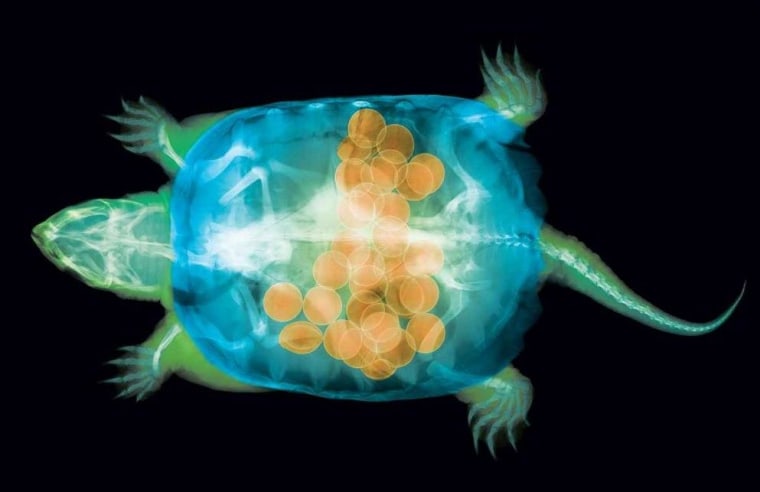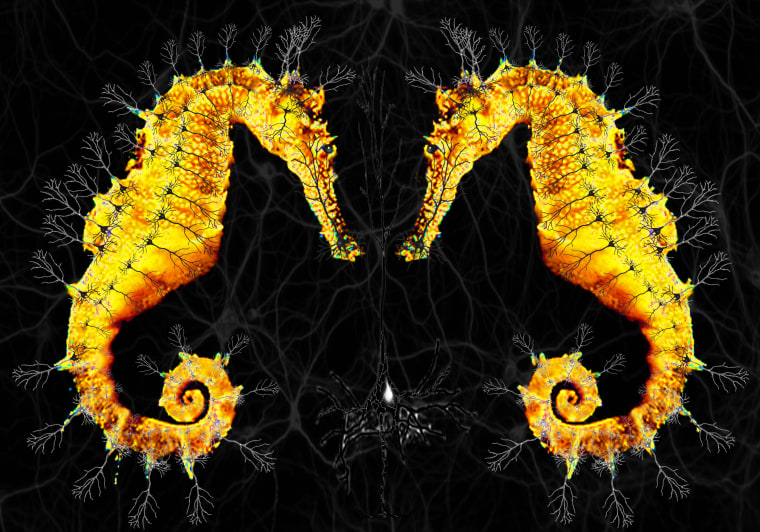What do you get when you cross neurons with seahorses? The punch line for that inside joke can be seen in one of the winners of this year's "Vizzies."
The annual Vizzie awards recognize visualizations of scientific phenomena in the form of photography, illustrations, posters, graphics, videos and apps. In past years, the contest was known as the International Science and Engineering Visualization Challenge, but now that the National Science Foundation has partnered with Popular Science, the contest has been given a snappier name.
This year, the judges had to sort through 300 entries from a dozen countries to come up with the winners, including a poster that blends a picture of seahorses with a motif inspired by the neurons of the brain's hippocampus. The poster — created by Robert Clark, a neuroscientist at the University of California at San Diego — is a visual joke because the hippocampus actually looks a lot like a seahorse. In fact, the word "hippocampus" is Greek for "horse sea-monster."

Other Vizzie winners include a colorized X-ray image of a snapping turtle with a clutch of eggs inside; a brain-cell forest that was one of the illustrations for a graphic novel called Neurocomic; a neuroscience app called Glassbrain; and a video showing how origami has inspired spacecraft designs.
To check out all the winners, take a look at the galleries at the National Science Foundation website and at Popular Science.
IN-DEPTH
- Olympus Bioscapes: Micro Images Reveal Alien World
- 'Art of Science' Photos Prove Scientists Have Soul
- 'Life: Magnified' Shows Off the Wonders of the Cell
- Nikon Small World Marks 40 Years of Seeing the Invisible
